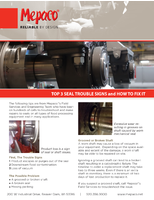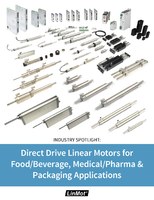TW Series of Ball Screws for Twin-Drive Systems Used in Machine Tools
Contributing Towards Higher Rigidity, Accuracy, and Responsive Performance of Machine Tools-
Tokyo, Japan, September 29, 2006 - NSK Ltd. has developed a new series of ball screws for twin-drive systems, which are used in machine tools and machining centers.
An increasing number of machining centers and machine tools are adopting twin-drive systems due to an increase in size of the machines themselves, higher speed and accuracy requirements, and a growing use of highly sophisticated synchronous control technologies.
Such centers and tools that use two sets of ball screws are able to achieve significant improvements in rigidity and responsiveness. If a ball screw is mounted off-center, it generates a force that causes the table to slightly rotate. By using two sets of ball screws, the amount of vibration related to rotation and acceleration/deceleration can be reduced. However, simply mounting two sets of ball screws without due consideration will result in variations between the two ball screws, which will be detrimental to positioning and travel accuracy and cause ball screw service life to deteriorate. NSK has addressed these issues with its newly develop TW series of paired ball screws for use in twin-drive applications. The TW series ensures high rigidity, high accuracy, and high-responsive performance in twin-drive applications such as spindles and tables.
Features
1. Highly accurate feeding is achieved by specially controlled lead accuracy and preload torque, and by forced cooling. Limiting deviation of lead accuracy and preload torque, and minimizing heat generation and temperature rise under high-speed operations with forced cooling, has resulted in significantly improved travel accuracy of the table. Additionally, the TW series ensures long-life durability by mitigating partial loading that would normally be generated in a pair of conventional ball screws due to deviations in travel accuracy
2. High rigidity, high-load carrying capacity, and highly responsive performance are achieved by switching from a single-drive system to a twin-drive system. Even if the shaft diameter of the ball screws is reduced by one size, higher rigidity, higher load carrying capacity, and improved responsiveness are achieved because of reduced inertia of the screw shaft.
3. Faster operating speeds and quieter operations are made possible even if a smaller screw diameter is used in this twin-drive system. NSK has adopted a new unique ball circulation system designed to promote lower noise levels with a more symmetrically contoured circulation path. Compared to a conventional ball recirculation circuit, the TW series offers higher speed performance at lower noise levels. Super high-speed feeding with a maximum 120 m/min is possible (shaft diameter 40 x lead 30; 4 000 rpm).
Sales of this product will be launched in November 2006. Initially, shaft diameters ranging from 32 mm to 63 mm, and leads ranging from 10 mm to 30 mm will be made available. NSK projects annual sales of 500 million yen in 2008. Visitors to the 23rd JIMTOF to be held in November 2006 can see a display of this newly developed product at the NSK booth




